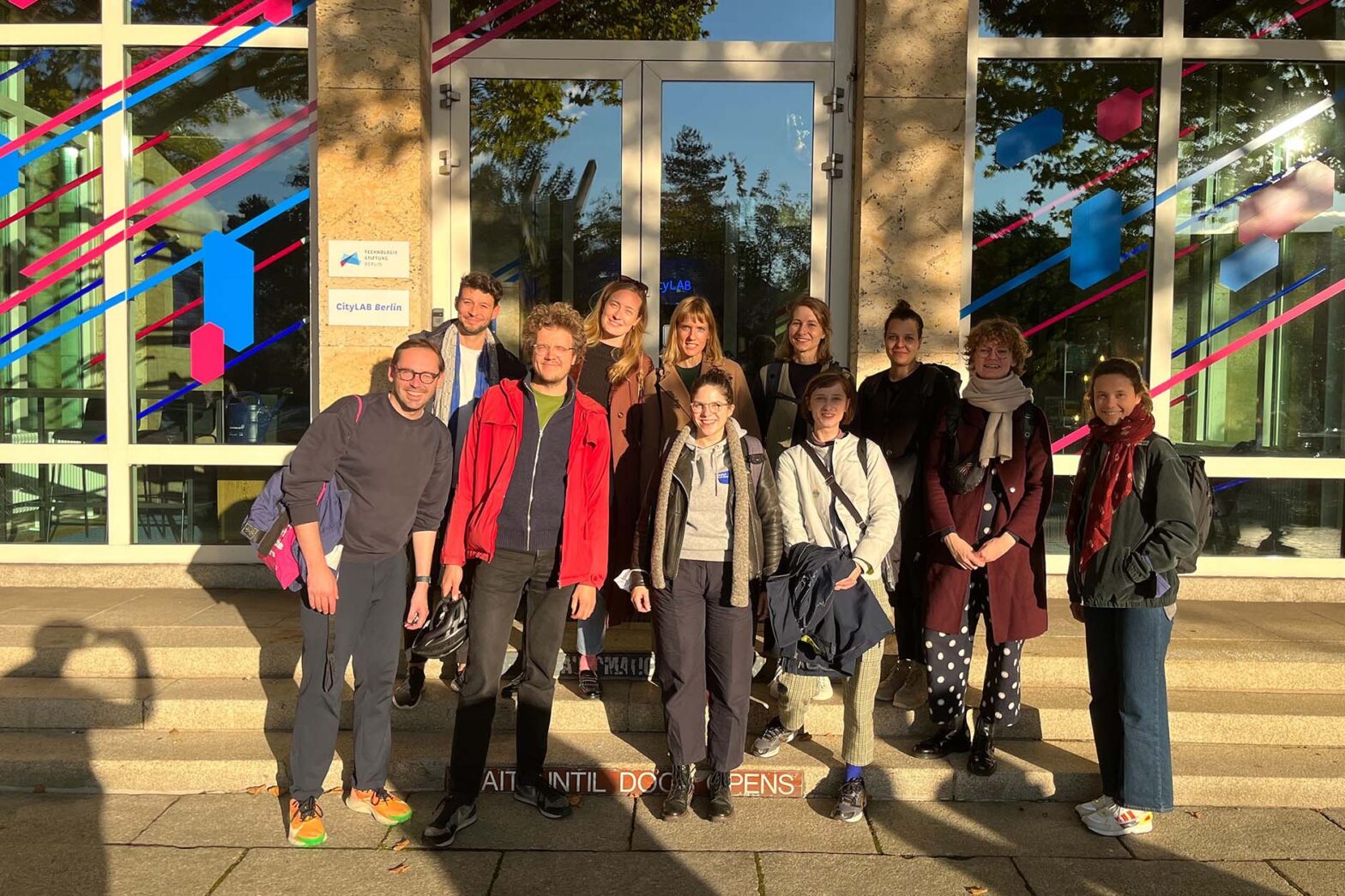This was an intense but fulfilling week. It included two offsite days, which both required quite some preparation.
The highlight was our design team’s away day, for which 12 of us 14 came together. It was the largest group of designers at the DigitalService gathering in one physical location.
On Friday afternoon, we had a thought-provoking exchange with Estonia’s former CIO Siim Sikkut. He was in town to promote his new book ‘Digital Government Excellence: Lessons from Effective Digital Leaders’ and stopped by for an extended lunch and discussion session.
Spending time together as a design team
On Thursday, almost our entire design team came together. We spent a whole off-site day discussing things that matter to us, getting to know each other better and creating some sense of team spirit.
57% of the designers at DigitalService joined in 2022 alone. And there are 91 individual connections between us, which makes it difficult to have sufficient time for exchange. So having an entire day for us to take things apart, develop a shared understanding of our profession, and co-create new artefacts and ideas felt like a very needed luxury.
Our schedule was packed, including:
- Break the ice (15 mins)
- Review the design skills (75 mins)
- Clarify: Who owns this question? (60 mins)
- Discuss our design challenges (90 mins)
- Create a draft of design principles (90 mins)
For the morning ice breaker, we used a sheet for 13 minutes to let everyone find commonalities with each other. The task was to go around and find one unique commonality with each person in the room. The key was to cannot repeat the same commonality with anyone else. That was done faster than expected. Among other things, people found out they have non-German passports, grew up bilingual, or that they both can do the splits.
We were fortunate to have ample space in CityLAB Berlin’s impressive neo-classicist Tempelhof airport building to fill all walls with stickie notes.
Initiated by my colleague Charlotte, we reviewed the third draft of a set of design skills. We looked at 4 skill areas with 3 skills each, 12 in total. In the exercise, we had everyone read and note what the skills might it mean in practice and how they are applied. Then, designers rotated and collected open questions, while also trying to answer some questions left by others.
Before lunch, we explored the differences between roles in a team. In pairs, peopled marked which roles should be responsible for each question or task. They indicated who has the main responsibility, who shares responsibility, and who is contributing to a task. Then, we discussed how many were allocated to design and which were the most controversial allocations.
Then after lunch and building a ‘human machine’, we dove into what hinders us from experiencing well-designed public services. In 3 subsequent rounds, we looked at barriers, potential building blocks to overcome them, and initiatives and formats to contribute to developing those building blocks.
While that would have already been enough, we spent the last segment of the day drafting our design principles.
In the feedback, the designers said they liked seeing and spending time with the other designers and the space, the schedule, the flow and the organisation. Everyone wanted to know what’s next, how we keep the momentum and more regularly find the time for more profound exchange.
The spirit, level of engagement and participation from everyone, plus the number of topics we covered, was impressive. As a result, we have a good sense of what should happen next in which format and is driven by who – as keeping this momentum will be vital.
Making our work publicly visible
On Wednesday evening, our designer Sabrina presented at the Service Design Drinks Berlin. Having co-founded the previous iteration of the format over a decade ago, it felt like a warm homecoming. The brilliant folks we handed the event series over to are still running it and have injected new energy.
So it felt extra great to see a room full of 60 to 70 people all interested in user-centred public service design. My colleague Sabrina talked about ‘Better service design through digital-ready legislation: Redesigning policymaking to make better service design happen’. Over the past week, I supported her a bit by strengthening the narrative and filling some minor gaps.
The format is still as interactive as we started it in 2011, so Sabrina had the attendees use a draft of a digital-ready legislation canvas. Along with the fictional case of a new dog tax, they were asked to come up with what a forward-looking, future-proof law would need to consider.
As part of the work, Sabrina showed a service landscape map she and her team developed to document and visualise the law-making process. This style, structure and level of detail differ a bit from that described in Will and Ignacia’s landscape map blog post from earlier this year.
After the talk and hands-on exercise, several well-informed questions followed, which showed the interest in the topic.
The session was recorded and should be available for rewatching shortly. The English slides are available on GitHub inside our public design document folder.
Another meet-up and conference talk are already in the making. My design colleague Nadine will speak at the Berlin Product Design Meetup in less than 2 weeks. And in about 3 weeks, product manager Katja will talk about her work on the property tax service at our forthcoming Public Service Lab in Freiburg.
What’s next
Next week will be busy, too. I’ll be visiting Paris first to attend a European digital government service team meet-up. Then, two days later, I’ll head up to Edinburgh via London to co-run a workshop with Kara at the ‘Service Design in Government’ conference. I still need to prepare all that content for the events. So no time to stop.


Ein Kommentar
Kommentare sind geschlossen.